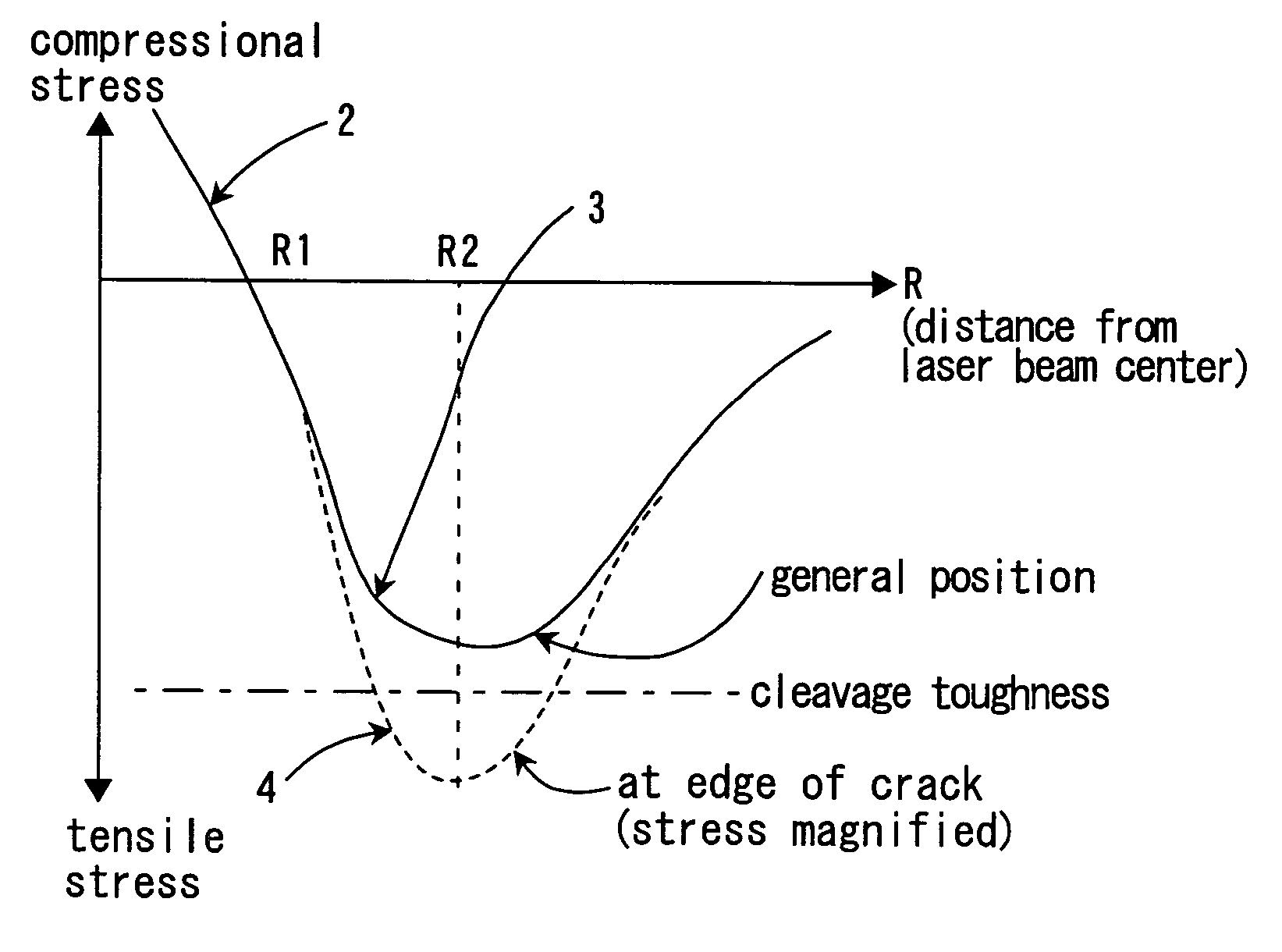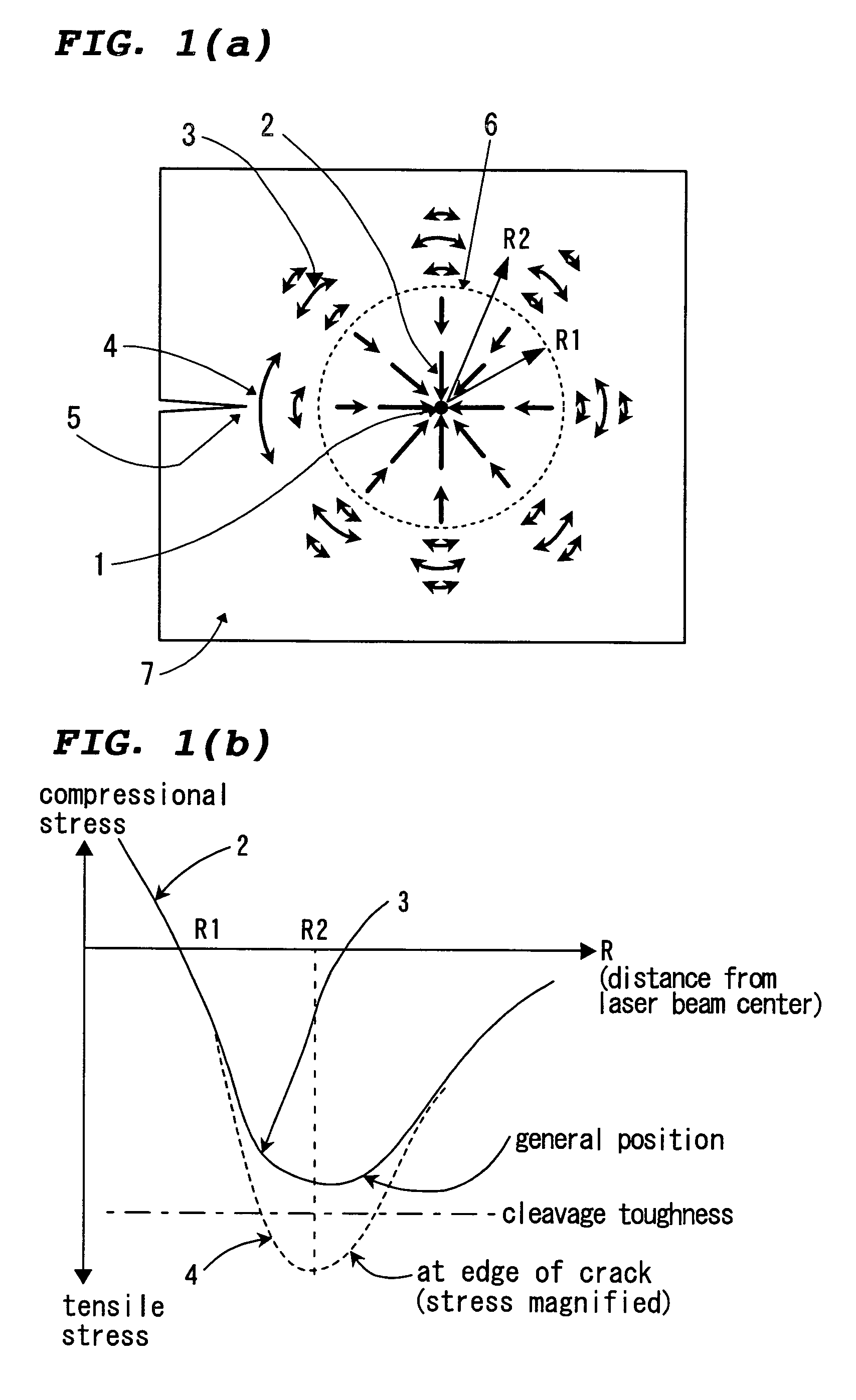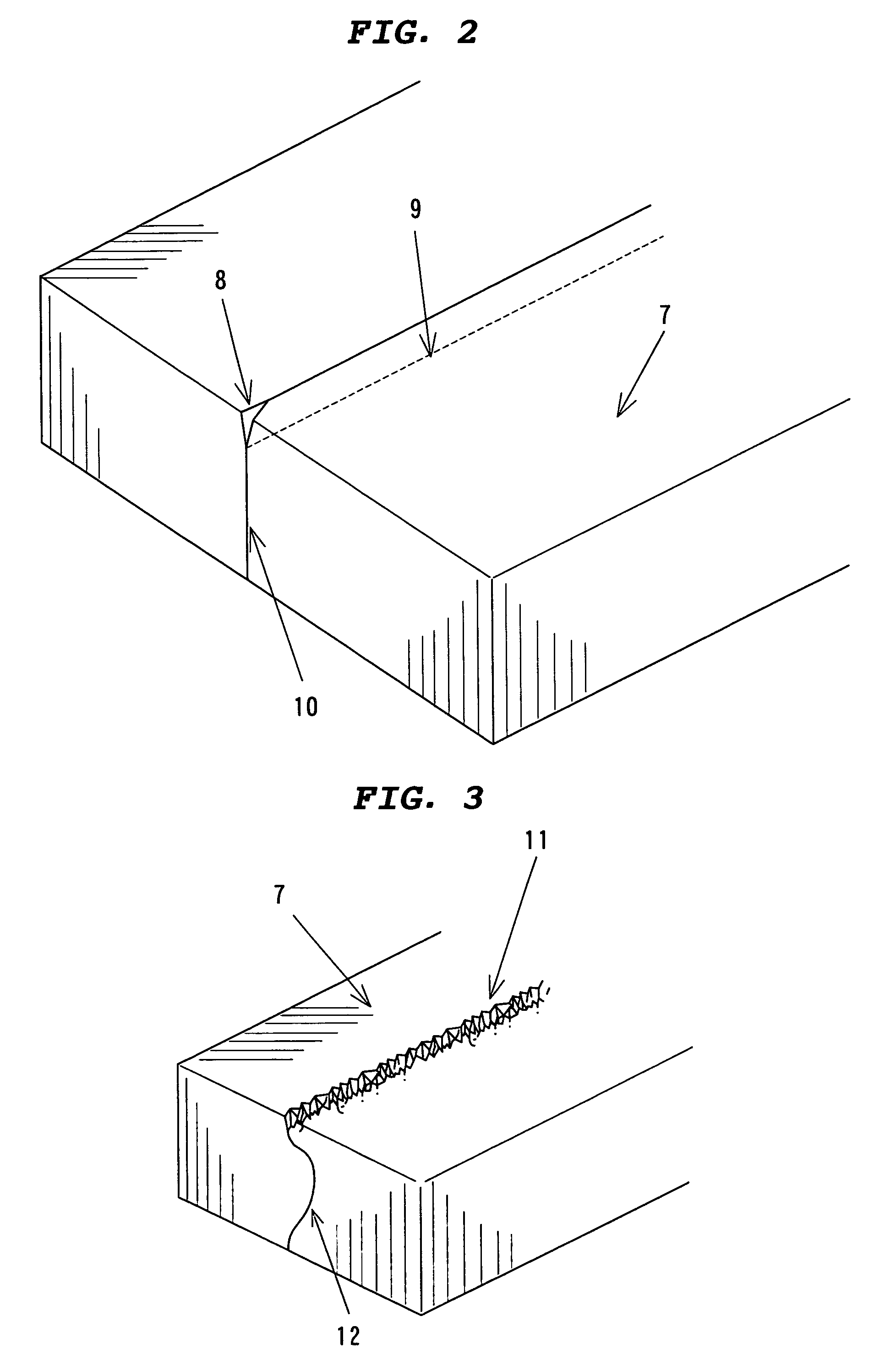Full-body laser scribing method of fragile material
a laser scribing and fragile material technology, applied in glass making apparatus, manufacturing tools, welding/soldering/cutting articles, etc., can solve the problems of difficult mechanical cutting of tempered glass used in architecture, weakening the mechanical strength of glass, and not being free from the various kinds of problems, so as to achieve high quality
- Summary
- Abstract
- Description
- Claims
- Application Information
AI Technical Summary
Benefits of technology
Problems solved by technology
Method used
Image
Examples
first embodiment
[0039] Generally, the penetration of light within any material depends upon its absorption in it. Let's the absorption coefficient of the material be denoted by a (cm−1), propagated distance by x (cm), the beam intensity before and after the propagation by I and I0 respectively, the following relation holds.
I=I0·e−ax (1)
[0040] From Eq. (1), the necessary absorption coefficient can be determined in relation to the expected distance. Next, the maximum, optimum and minimum values of absorption coefficient proper in this invention are calculated
[0041] The minimum value is defined by the condition that 90% of the laser beam passes through the plate of the thickness L. Here, the majority of the laser beam energy is wasted but the full-body scribing can be secured. Putting I / I0=0.9 in Eq. (1), we obtain a=0.105 / L. We define this case as the minimum value of the absorption coefficient. We have often experienced that when the laser scribing is performed up to the thickness of one fourth, w...
second embodiment
[0053] Next one example of the usefulness of selecting the wavelength is given. In the embodiment 2, the use of CO laser beam oscillating in the 5 μm band in stead of CO2 laser is explained. This laser is relatively feasible because a CO2 laser can be converted into this laser by changing the laser gas and cavity optics. A CO laser generates the beam, the wavelength of which extends in the band between 4.9 μm through 5.7 μm. According to FIG. 5 the absorption coefficient of quartz at 5 μm is 62.85 cm−1. Then according to Eq. (1), 99% of the laser beam is absorbed in the glass plate of the thickness of 0.7 mm. The full-body scribing of the glass plate 7 can be done with a CO laser, although a lower absorption coefficient is more desirable. As the thickness of the glass plate used in the LC panels decreases monotonously, this method to use a CO laser will become more useful in the future.
third embodiment
[0054] It is possible to increase the transmission of the laser beam within the glass thereby realizing an ideal full-body scribing. Glass is transparent in the visible wavelength range and generally shows absorption both in the UV ad infrared ranges. FIG. 7 shows the transmission characteristics as a function of wavelength for 0.7 mm thick non-alkaline glass which is used in LC TV. The vertical axis of this figure is the transmissivity T (%). Neglecting Fresnel reflection on the glass surface, Eq. (1) gives the value of a from the relation of T=I / I0=e−0.07a. In contrast to the case of crystal, the composition and structure of which are fixed, the composition of any commercial glass varies from manufacturer to manufacturer. We can refer to the transmission characteristics shown in FIG. 7 in the first order approximation. Then we can obtain the absorption coefficient of non-alkaline glass in the wavelength range between 2.5 μm and 4.6 μm to be 2.3 cm−1 to 40 cm−1. On the other hand, ...
PUM
| Property | Measurement | Unit |
|---|---|---|
| depth | aaaaa | aaaaa |
| thicknesses | aaaaa | aaaaa |
| thicknesses | aaaaa | aaaaa |
Abstract
Description
Claims
Application Information
 Login to View More
Login to View More - R&D
- Intellectual Property
- Life Sciences
- Materials
- Tech Scout
- Unparalleled Data Quality
- Higher Quality Content
- 60% Fewer Hallucinations
Browse by: Latest US Patents, China's latest patents, Technical Efficacy Thesaurus, Application Domain, Technology Topic, Popular Technical Reports.
© 2025 PatSnap. All rights reserved.Legal|Privacy policy|Modern Slavery Act Transparency Statement|Sitemap|About US| Contact US: help@patsnap.com



